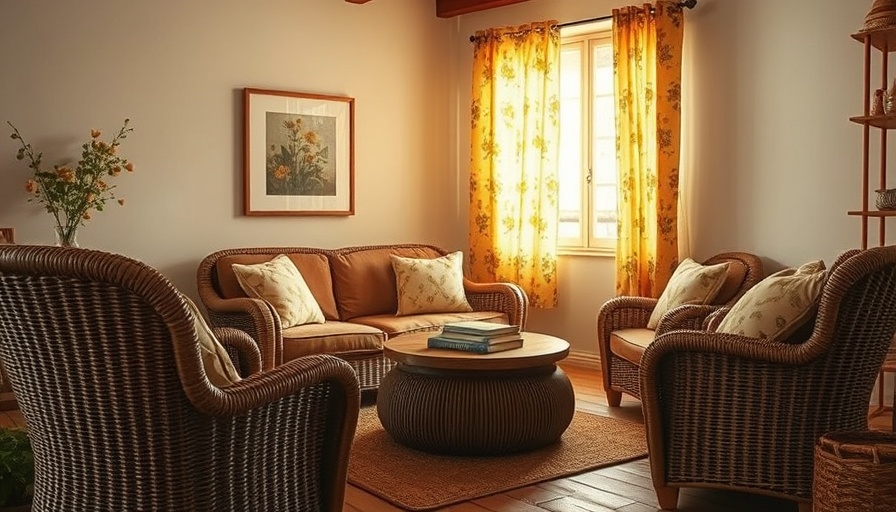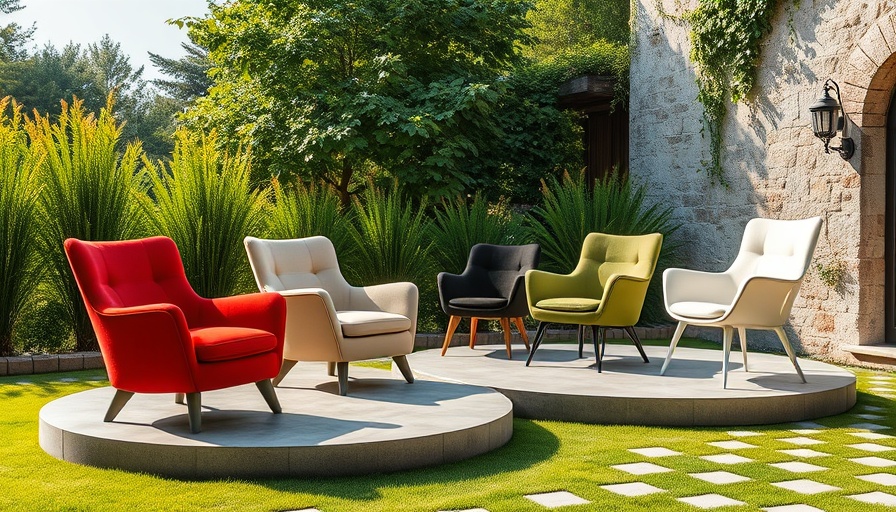
Atelier Vime: A Revival of Rattan Craftsmanship in Provence
The charming village of Vallabrègues in Provence has welcomed back its legacy of rattan craftsmanship with the recent reopening of Atelier Vime's emporium, La Maison Vime. This distinctive shop promises to be a treasure trove not only for those who appreciate fine design but also for anyone intrigued by the art of living in harmony with nature.
The Historical Significance of Rattan in Vallabrègues
Five years ago, Anthony Watson and Benoît Rauzy embarked on a journey to restore an 18th-century townhouse overlooking the lush Rhone River. As they peeled back layers of history during the renovation, they discovered that their home had once served as the thriving headquarters of a rattan company. Historically, Vallabrègues was known as the largest basket producer in France, thanks to the region's richness in natural resources—specifically palm and willow trees.
However, the growth of synthetic materials devastated the local craft industry. Watson, a stylist with British and French roots, teamed up with Rauzy, a water and energy consultant, to revive this endangered craft. Their endeavor led to the establishment of Atelier Vime in 2018, where they not only sell vintage rattan pieces but also design new creations through collaborations with local artisans.
A Dedicated Restoration Effort
With their recent acquisition of an adjacent property—once part of the same compound—Watson and Rauzy undertook significant renovations to transform it into La Maison Vime. Their dedication to historical preservation shines through as they meticulously restore original features, such as wooden floors and lime-painted walls, creating a Provençal atmosphere that echoes the past.
In their quest to respect tradition while honoring modern aesthetics, they enlisted local specialists, including Elise Orrier, who used natural pigments to renovate the shop. The result is a harmonious blend of the old and the new, offering a sensory experience that delights shoppers.
An Artful Shopping Experience
Inside La Maison Vime, guests are invited to wander through living spaces that showcase an array of rattan furniture, exquisite ceramics, and artisanal glassware. Each room tells a story, presenting curated collections that blend functionality with artistry. From vintage rattan chairs that carry whispers of history to newly designed pendant lights crafted by local artisans, the emporium stands as a testament to both revival and innovation.
Connecting with Nature and Craftsmanship
The recent environmental shifts and growing interest in sustainable living have led many to revalue artisanal craftsmanship. Atelier Vime offers not just products but a philosophy: the importance of choosing quality over quantity, supporting local artisans, and finding joy in everyday objects. As more consumers seek authentic experiences, La Maison Vime positions itself as a hub for those looking to enrich their homes with meaningful, beautiful items.
The Future of Artisan Craft in Provence
The reopening of La Maison Vime is more than just a business venture; it's a revitalization of local heritage. This emporium represents a hopeful future not only for rattan craftsmanship but also for other traditional crafts that are at risk of fading away. As visitors engage with the surroundings, they also contribute to a growing appreciation for eco-conscious and community-supported craftsmanship.
Conclusion: Visit and Support Artisan Craft
Atelier Vime is not just a shopping destination; it’s a celebration of history, craftsmanship, and sustainable living. As you explore this beautiful emporium, you’ll not only find unique items that enhance your living space but also actively participate in the revival of a time-honored trade. Don't miss the chance to witness this fusion of tradition and design by visiting La Maison Vime and experience firsthand the joy of crafting a home filled with stories and artisanal beauty.
For more insights on sustainable living and design, explore the stories shared through ProHomeGuides, your go-to source for home inspiration.
 Add Row
Add Row  Add
Add 




Write A Comment